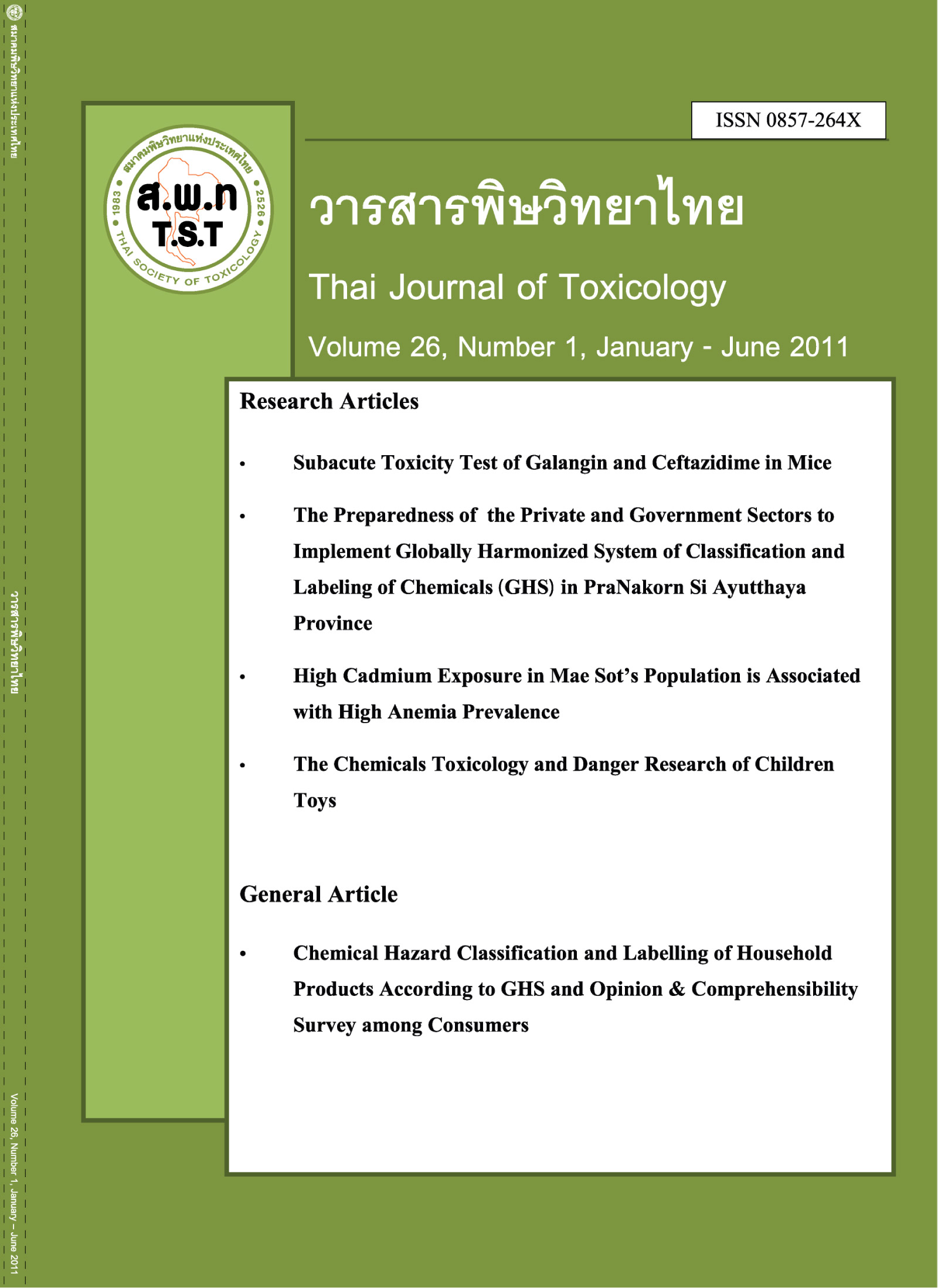High Cadmium Exposure in Mae Sot’s Population is Associated with High Anemia Prevalence
Main Article Content
Abstract
Residents of the Mae Sot district, Tak province in Thailand are exposed to high levels of cadmium (Cd), a toxic metal that is contaminated in the soil and rice in this region. We hypothesized that chronic Cd exposure was a risk factor for enhancement of anemia prevalence. Blood (B) and urinary (U) -Cd levels in addition to biomarkers of renal tubular dysfunction [U-β2-microglobulin (β2- MG) and N-acetyl-β-D-glucosaminidase (NAG)], glomerular dysfunction (serum cystatin C) and anemia (hemoglobin <13 g/dl in men, <12 g/dl in women) in 700 subjects (261 men, 439 women) with a history of elevated U-Cd were assayed. The results showed that average levels of B-Cd (6.71+1.84μg/l in men, 4.94+2.02μg/l in women) was higher than reported Cd levels from a normal Thai population (0.45-2.11μg/l). U-Cd levels were 3 times higher than the safe level of 2 μg/gCr, established by the WHO. Anemia was found in 60 men and 102 women. In anemic subjects, U-Cd was significantly higher than non-anemic subjects. In addition, concentrations of β2-MG showed a stronger relation to an increase of anemia prevalence than the NAG and cystatin C. Women with β2- MG levels 1,000 μg/gCr were 2.77 times more likely to be anemia than women with β2-MG levels <400 μg/gCr, whereas the probability in men was 1.61. Therefore, we concluded that prevalence of anemia among the subjects was higher than Thai general population and associated with the elevated cadmium levels. Clinical interventions should be implemented in the Mae Sot community to prevent severe anemia and cadmium intoxication.


